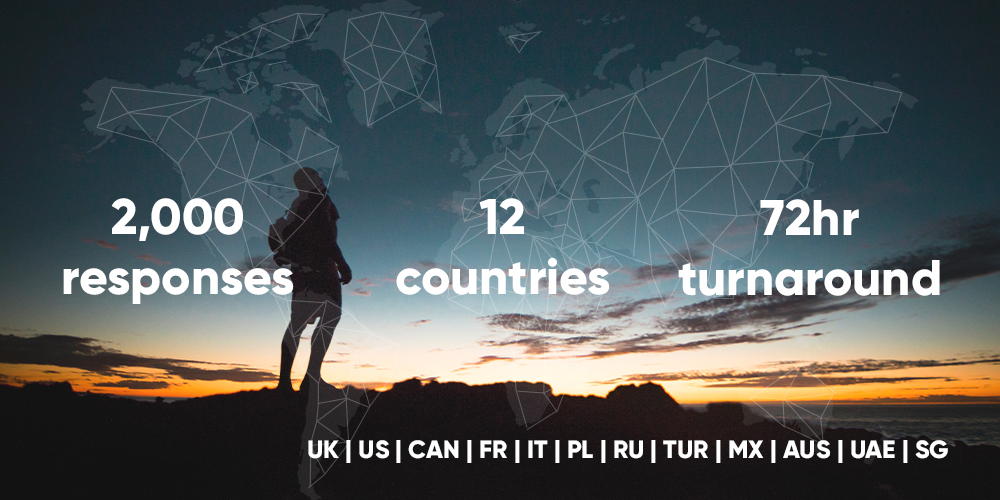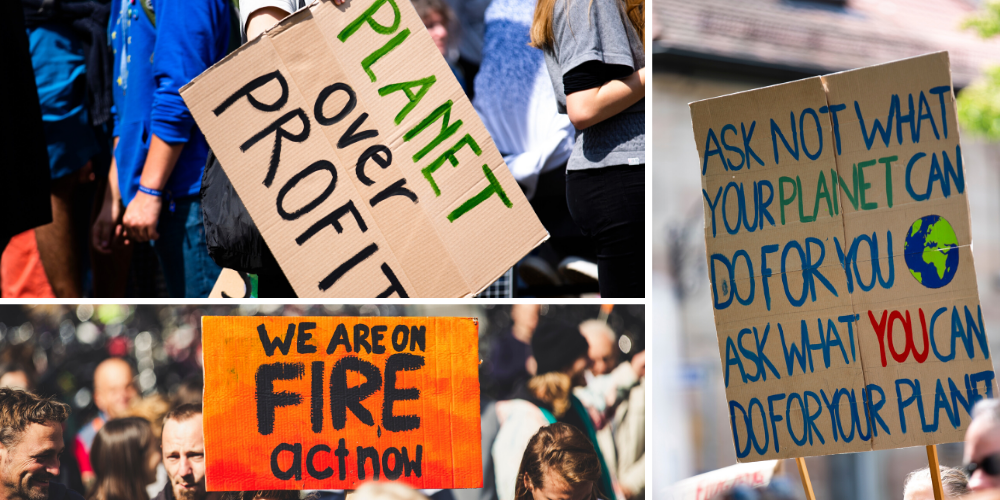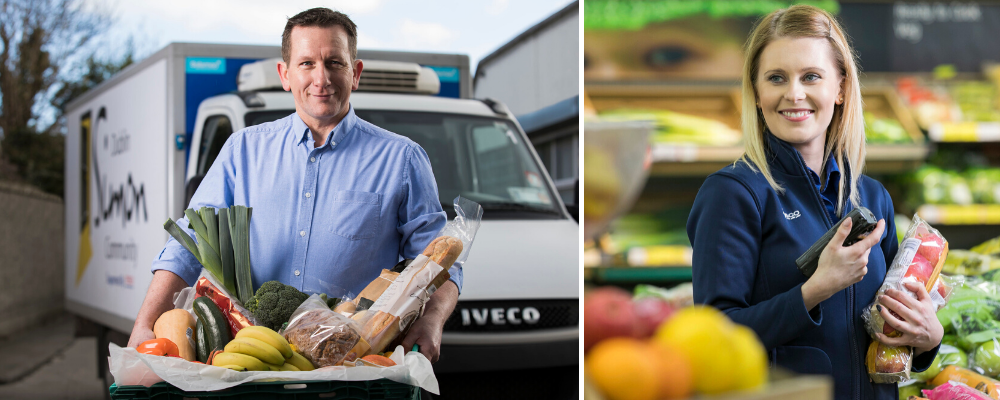There’s been no shortage of 2020 life hacks shared by our global community in recent weeks. When we asked our users how they’d be changing things up in the new decade, we saw 1000s of responses around more considered consumption – giving us a picture of a new, more sustainable, eco-friendly and, health conscious consumer. But what stood out more than anything was our community’s philanthropic streak – with a focus on community work and making changes that are altruistic rather than selfish (see our New Year New You blog for a full report).
You might call it the Gen Z effect? A chain reaction that began with Greta Thunberg’s classroom walk-outs and filtered through to create a new world order of active do-gooders – motivated, mobile and ready to make change. Whatever the cause, it’s reflected in the thoughts and feedback of our global community of Bulbshare users who are looking to be kinder, more actively caring people in 2020 – with a focus on bringing their communities together.

The threat of climate change, the growing gap between rich and poor, and the rise of more divisive politicians in the mainstream has seen a reactive sense of ‘pulling together’ among our community – with our users striving to make 2020 the year when they focus on charitable work and community action. For brands and consumer organisations, this is the year to put purpose on overdrive – allowing it to lead brand positioning and sit at the heart of messaging and campaigns.
“My new year’s resolution will be to volunteer more as there is so much to do to help our communities. I feel my time would be better spent doing things which are uplifting, and I would like to make a difference, however little. There is a local food bank I want to volunteer at so I’m looking forward to the new challenge in 2020.” (Bulbshare user)
“My hopes for today and the future are… On-going positivity, companionship, improved environmental stability and increased community spirit.” (Bulbshare user)
“(In 2020) my philanthropy and sensitivity to social problems will continue” (Bulbshare user)
“(In 2020) politicians should promote awareness, love and patriotic spirit to all citizens instead of hatred among them…” (Bulbshare user)
More than ever, global consumers are seeking brands that stand for good deeds and community action. Our Purpose Power blog highlights 10 examples of brands doing ‘impact’ in surprising, innovative and authentic ways, as voted by our Bulbsharers, and shows how box ticking around purpose is no longer good enough – in 2020 brands must put their social good credentials at the heart of what they do, but they must listen to their audiences and get behind the causes that resonate with them.
The background
Since the phenomenal success of Tom’s Shoes’ ‘Buy a Pair, Give a Pair’ campaign (it all seems so long ago now), marketing managers have cottoned on to the fact that ‘purpose’ is a whole new channel through which to engage. The result is that brands have become like super heroes: Nobly fighting injustices, standing up for what’s right and bravely protecting those in peril. ‘Doing good’ has become the new norm, and instilling a moral or social purpose into operations – investing in causes and shaping marketing campaigns around changing the world for the better – is big business.
But is it enough? In a new world where brands are like political parties – being judged just as much on their policies as their products – is jumping on a moral bandwagon still going to cut it? The progressive brands are those that properly engage with their audiences, discover the issues that affect their worlds, and support them in taking pertinent, tangible actions that really resonate. Our Bulbsharers tell us they’ll be leading on community action in 2020 – they expect brands to do the same.
The sceptics
As ever, consumers are sceptical to the melee of moral messages. Do the marketeers at the heart of social purpose campaigns have dollar signs in their eyes? Do brands really care? Or is it a fad, full of hollow sentiment, aimed at engaging gen Z. According to a report by the Endelman Trust, 65% of young consumers think companies overstate their environmental credentials, while 45% are sceptical about the causes brands support.
It’s hardly a surprise that media-savvy, super-informed and politically mobile gen Z consumers aren’t taken in hook, line and sinker by brand rhetoric. Striving to take action themselves, and inspired by radical activists like Thunberg, they’ve been made sceptical of the voices of the establishment by politicians who talk the talk but don’t walk the walk – and they extend that same pessimism towards so-called ‘do-gooding’ brands.

How to do it right: co-created purpose
According to a Fit for Purpose report by the London agency, Radley Yelder, which detailed 2017’s top 100 purpose-focused brands, 83% of mission-led organisations instil a strong sense of collaboration into their operations – either with competitors, employees or their customers.
When Tesco launched its food waste campaign, its chief executive Dave Lewis told Marketing Week how the company’s new ethical focus was principally driven by customer expectation. With customers at the heart of the purpose drive, it makes sense that brands should involve them in the purpose process – informing their campaigns with detailed insight, and allowing their audiences to co-create those campaigns with them.
If a brand really wants to address the most relevant causes that resonate with its customers, it needs to understand what those causes are, how audiences feel about them, and the best ways to involve people in taking action. See our Purpose Power toolkit below for the best ways to engage your customers around being authentically altruistic, by discovering the causes that have meaning for them.

Key take-outs
Five ways to engage your customers by co-creating your brand mission…
- Co-create your campaigns. Involve your customer communities in the creation of your campaigns, with real people’s opinions and co-created content. Audience collaboration drives meaning and authenticity.
- Back insight-driven causes. Ask your customers about the global issues that they really care about in order to inform your social purpose campaigns. Supporting causes that resonate with your audience will drive larger engagement.
- Take action. As more and more brands put social purpose at the heart of their marketing, gen Z are becoming increasingly sceptical of empty promises. Messaging is not enough, brands must take tangible action to follow up on the slogans..
- Involve your community. Social purpose campaigns that give customer communities the opportunity to really get involved with the good work that is being done, are all the more powerful, tangible and authentic.
- Measure your results. Campaigns that are backed by real results drive more meaning with customers. A campaign should be designed so that the data relating to its beneficiaries can easily be captured and communicated. The number of people helped by a brand campaign is a powerful message.

Es cierto cada uno debemos de poner nuestro gran esfuerzo y los líderes de las grandes marcas y compañías que tomen la delantera ,por nuestro planeta
Ser mas voluntaria ya que hay mucho por hacer mayor espíritu